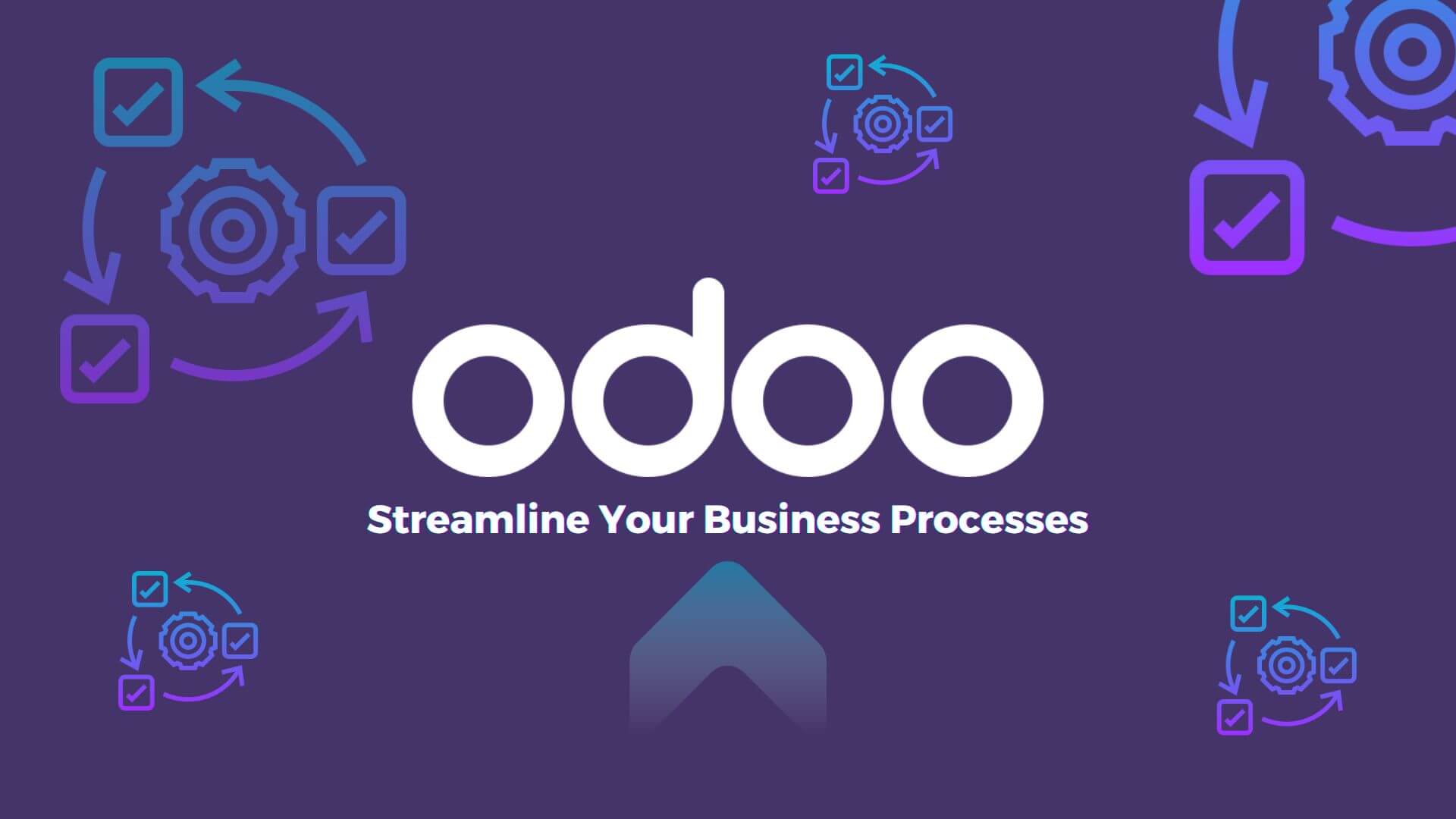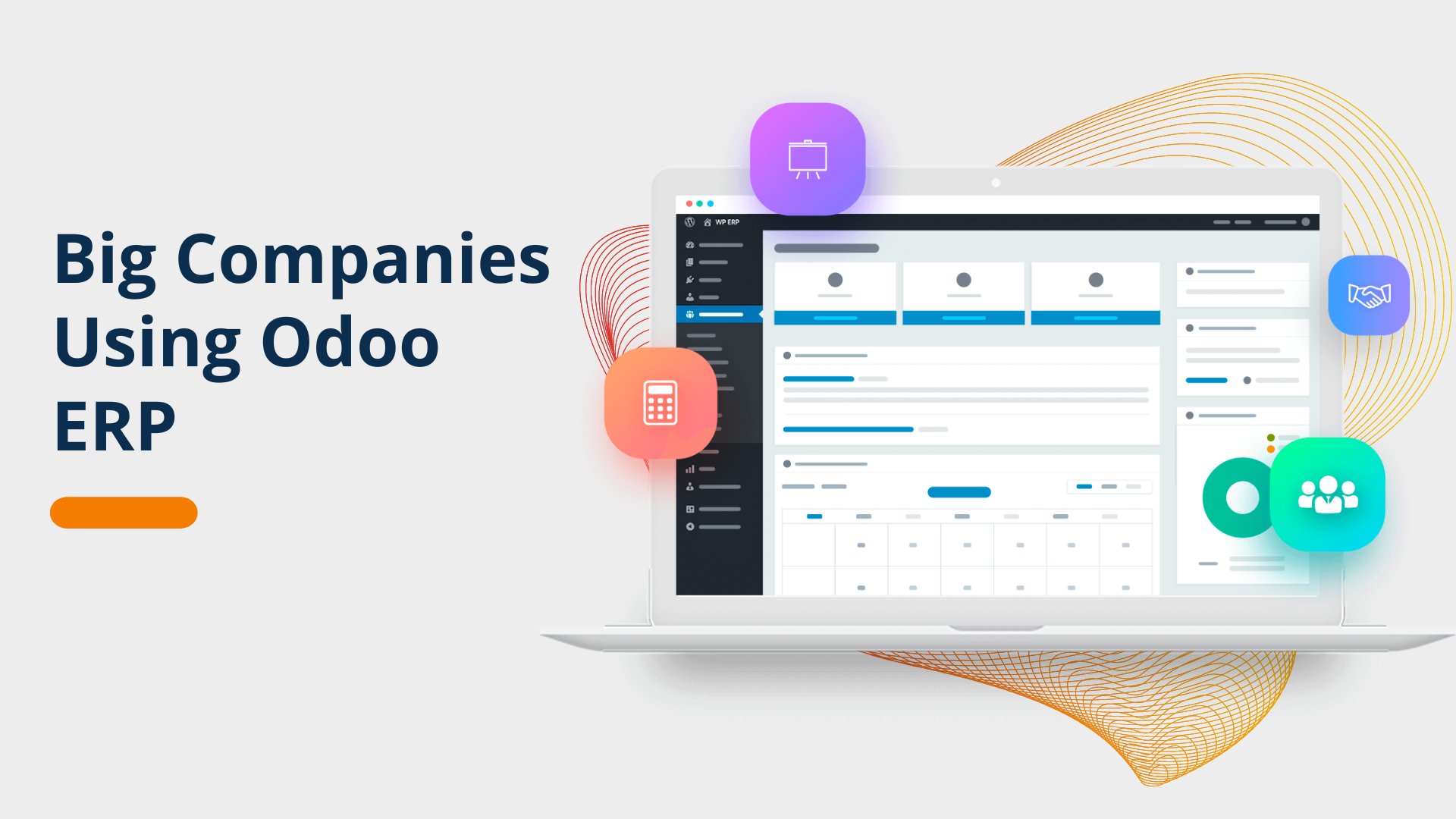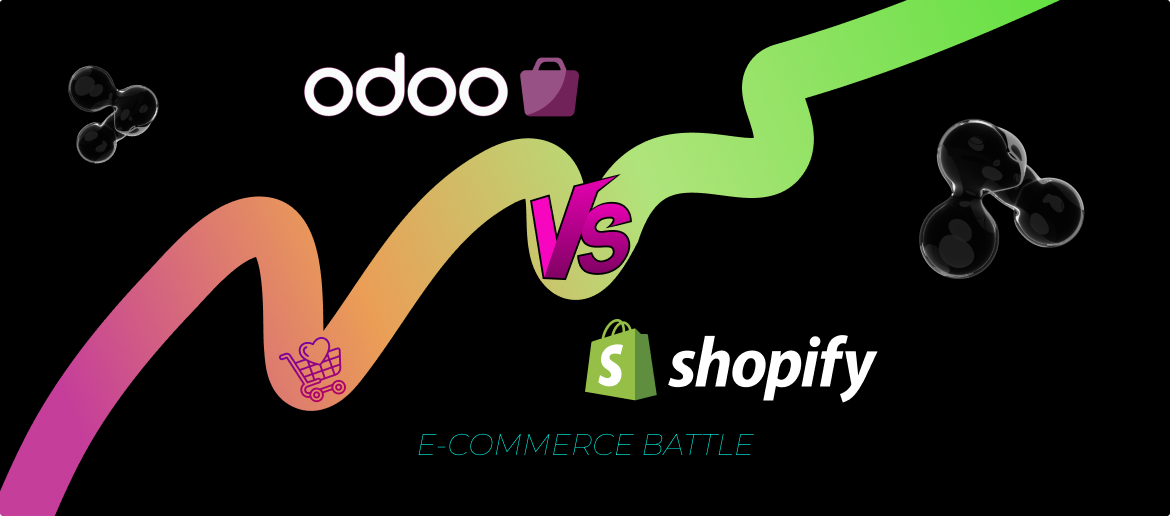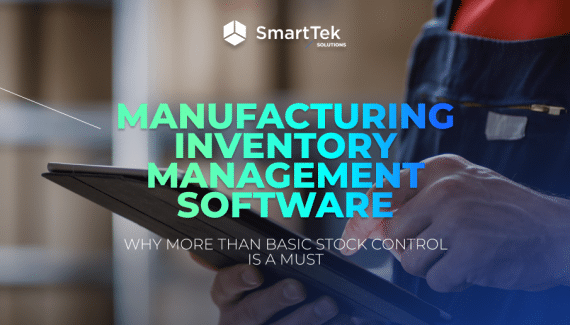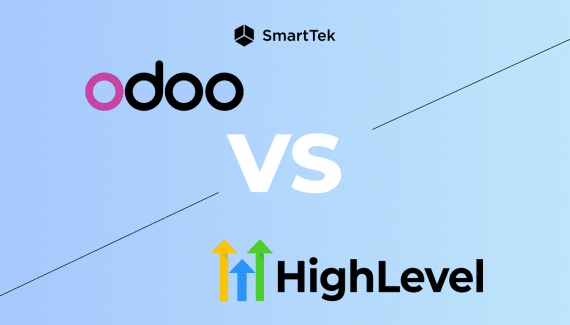Choosing an E-commerce Partner for Life
Odoo & Shopify are multifunctional platforms designed for retailers to fulfill users’ guilty pleasure of users that hits the hardest: online shopping. Your e-commerce platform should be easy to use, easy to design and optimize for search, and functional to cover your marketing or automation needs while handling all the must-dos simultaneously to run your online store: management of products, order processing, and payment gateways. Looks harder than choosing a spouse, so hopefully, we’ll give you a hand in this article.
A fundamental difference between Odoo & Shopify is that Shopify is a platform for retailers to sell through e-commerce that allows you to build your website, add payment integrations, and manage content on the website. On the other hand, Odoo is a multifunctional platform that allows you to create your e-commerce website, integrate multiple payment systems, and manage your content, but also manage your customer relationships in the CRM, support, inventory, email marketing, accounting, and automate plenty of those tasks.
Understanding the Contenders
Let’s start with the basics and define each e-commerce tool.
Odoo: The All-in-One Business Solution
Unpacking Odoo’s Capabilities
Odoo is a Swiss knife on the e-commerce market as it can handle the full product lifecycle. Let’s analyze it with the example of one product’s story. When a product arrives at your warehouse, you check it in, sign papers with a digital tool, and check its location. Afterward, you upload it on your website, which is created and designed on Odoo. You then manage & optimize the listing, it appears in Google searches, and you start getting customers & orders. Some customers subscribe to your newsletter, and you set up remarketing email campaigns inside Odoo, while others who ordered are processed in the CRM. Packages are being sent with FedEx, for example, you have those data tracked in the system, and warehouse data are updated as well. Sounds pretty cool, agree?
The value Odoo delivers to e-commerce businesses is the possibility to sync multiple processes and create the digital ecosystem of your business processes online, where you will be the heartbeat.
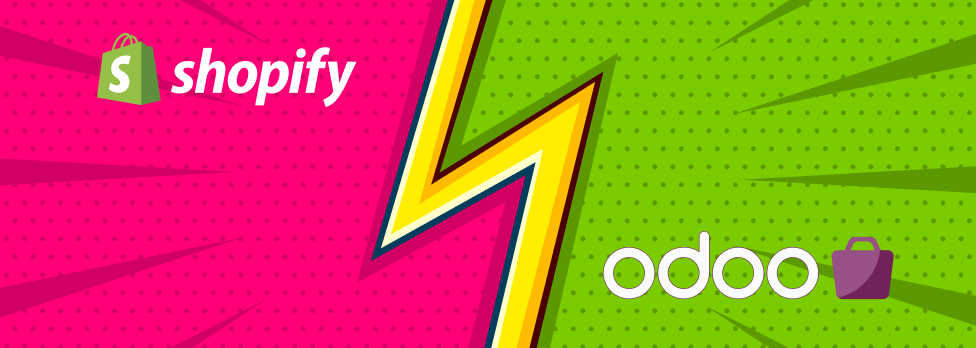
Shopify: The Dedicated E-commerce Powerhouse
Exploring Shopify’s Strengths
Shopify, as a tool, empowers users to sell both online and in person. It offers a user-friendly interface of the platform, provides pre-developed website themes, along with the possibility to create customized ones, as well as diverse tools for e-commerce marketing, such as email marketing, social media integration, Google Merchant center integration, abandoned card recovery, and programs to increase customer loyalty. The platform offers scalability options with numerous third-party applications to manage the inventory, shipping, and customer support.
Ease of Use and Setup
Odoo and Shopify: Beginner Onboarding Experiences
- Shopify: When you’re starting to work with Shopify, the platform leads you through the process of building an online store, making it accessible to users without any experience. A guided setup is made easy thanks to a wizard that guides you through the must-have steps of the process. Step-by-step guidance definitely makes it a winner as a beginner e-commerce platform.
- Odoo: Odoo, as a modular platform, is a bit more complicated, as you need to set up different modules, especially Apps, to enjoy the full scale of functionalities. In an online store case, we’re talking about setting up the website, CRM, inventory management, and accounting. It is less beginner-friendly than Shopify, as it has a steeper learning curve, but it’s a definite go-to choice for those whose online retail is growing and requires multiple operations to be managed.
Managing Daily Operations
E-commerce platforms are designed to simplify business processes and redundant operations. Let’s review our contestants’ tools and the features they deliver to smooth out retailers’ user experience.
Odoo E-commerce Tools
- Integrated Apps: Odoo offers seamless integration of your e-commerce website with CRM & sales, accounting, inventory management, HR, and more to manage everything from a single platform.
- Automation Tools: You can decrease redundancy with the automation of routine tasks, such as invoicing, email marketing, order confirmations, and inventory updates.
- Catalog Management: You can manage configurable products (variants, attributes, etc.), product inline page builders, digital products, product reviews, and recurring products (subscriptions).
- Design: You can create a custom website in Odoo and start it free of charge. You’ll have the opportunity to customize HTML/CSS, and even JS, to make it faster or simply use an AI-powered website builder with SEO-optimized templates with the full suite of SEO tools and suggestions.
- Multi-Website Support: The most exciting option Odoo delivers is the management of multiple e-commerce websites within one system, which helps you build a network of brands that may have a common warehouse and cross-selling opportunities.
- Inventory Management: You can have barcode support, stock-keeping unit support, product demand forecasting (which is very convenient for tracking seasonal sales), stock on hand, available stock, supply chain, return/exchange management, shipment tracking, backorder management, apps, multiple warehouses, purchase management, and inventory reports.
- Reporting: As Odoo is a system of multiple integrated apps, a customization consultant can help you create custom dashboards to sync sales, track customer behavior, show inventory levels, and other critical metrics for your retail to be up and running. For deeper analysis, you can have dynamic pivot tables, graphs, and subscription KPIs, like MRR, Churn, etc.
Shopify E-commerce Tools
- Customer Dashboard: This Shopify feature allows you to manage products, orders, and customer data through a simple, intuitive, and easy-to-use design.
- App Store: You can extend the functionalities of the platforms with apps. For example, you’ll need product demand forecasting, upselling in a cart, cross-selling on product pages, and purchase management. But keep in mind that it may require additional license investment and the developer’s help.
- Catalog management: Like Odoo, Shopify has all the basic features to manage your products.
- Design: Although you can easily create custom websites on the Shopify platform, take into account that you cannot customize JavaScript to make it faster and benefit from an AI website builder and AI-powered themes.
- Multi-Website Support: Unfortunately, Shopify cannot support multiple websites simultaneously. Each would require separate licensing & investments.
- Inventory Management: Although barcodes, SKUs, stocks, and warehouses are available, product demand forecasting, supply chain, backorder, and purchase management would require app integration.
- Reporting: You’ll have the opportunity to benefit from system-based reporting on products, inventory, and sales. Unfortunately, the customization of reports is only available with app installation
Customization and Flexibility
Design and Aesthetics
When comparing Shopify VS Odoo, we can see that both let us make a unique and appealing website. However, one difference may affect your budget. Both have easy-to-use drag-and-drop website makers. Hence, the devil is in the details. For example, Odoo is the only platform that lets you build a website faster with custom JavaScript. Odoo also offers better SEO optimization tools and is the only platform that lets beginners use an AI-powered website builder and AI-powered themes to save money on web design costs.
Extensions and Integrations
When talking about Odoo & Shopify integration capabilities in the e-commerce industry, a couple of key points are crucial for running a business.
Payment System Integration
Both support the most popular payment systems, but Odoo can support any payment system integration, as it offers the possibility to integrate your very own. Meanwhile, Shopify supports most of the popular ones but will require an app for recurring payments, and doesn’t work with Authorize.net, which is still a go-to for SMEs, especially those who accept electronic checks and credit card payments.
Third-Party Apps
Both Odoo and Shopify enable users to extend the platforms’ functionalities with additional applications offered by platforms and communities. The main difference is that within Odoo’s license, you already have more than 10,000 apps ready to use while handling some of the usual retail processes in Shopify isn’t possible without additional integration that requires investment.
Evolving with Your Business
Comparing Odoo to Shopify in terms of the growth of your business is crucial, and we have secrets to tell regarding this. So, let’s dive into these e-commerce platforms and have our questions answered.
Is the Platform Supporting Expansion, Increased Traffic, and Sales Volume?
Odoo:
- The platform is created with multiple scalability options – a wide suite of applications that can be applied simultaneously and interconnected, allowing you to customize your Odoo, thus facilitating the growth of your business.
- New modules resp. apps can be added to Odoo without disrupting existing processes, which is the best option in the long run.
- For increased performance, it’s recommended to host an Odoo e-commerce in the cloud, as appropriate infrastructure allows the management of high loads and traffic spikes.
Nevertheless, it’s always a good idea to stress test your e-commerce platform and involve Odoo consultants to deliver a smooth user experience of the website through the big sale seasons.
Shopify:
- The platform is created for a seamless user experience, with the possibility of addressing high volumes with perfect page speed, enabled with cloud-based architecture and built-in CDN (Content Delivery Network).
- To benefit from a full suite of resources, you may need the Shopify Plus plan to handle seasonal surges in traffic and large-scale operations.
- Shopify now delivers multi-channel selling options that help stores expand internationally with simplified content localization and alignment with local payment systems.
Odoo & Shopify Pricing
Odoo Pricing
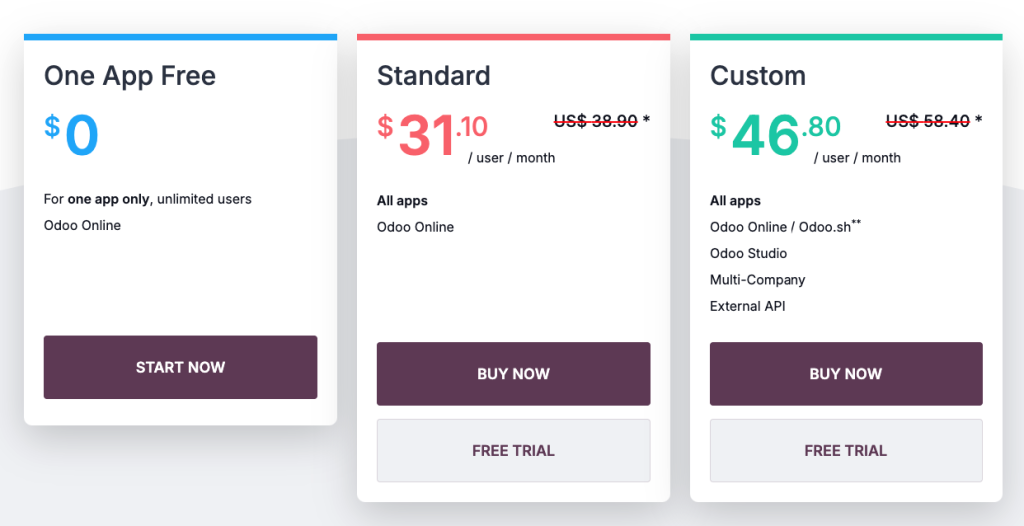
Odoo may be used for free by several users with a single app, like CRM. Community and Enterprise are the product’s two main editions. You may use Odoo’s Community Edition for free if it suits your needs. Plus, note that this edition allows you to make small customizations. Hosting expenses (if self-hosted), maintenance, upgrades, and fees for extra users or modules may go up over time as your business expands. Partners in implementation may tack on extra costs for their services if you decide to bring in experts. But if you want premium features and access to every app, the Enterprise Edition is what you need. It includes Sales, Marketing, Sign, Website, Accounting, CRM, Inventory, HR, Project, and POS, which are crucial for processing an e-business and its growth.
Shopify Pricing
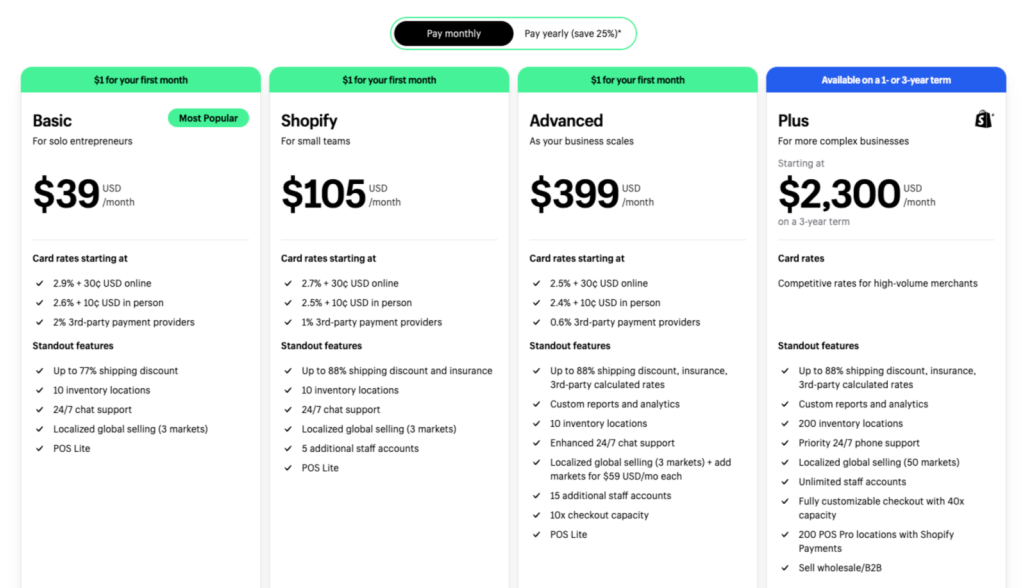
Shopify’s Basic plan will only cost you $39, making it a great option for SMBs starting in e-commerce. Meanwhile, for a custom website, you’ll need Shopify Plus. Additionally, you may need to pay for your custom website design and development, and a tailored platform is not achievable without an expert’s involvement. All the third-party integrations and functionality extensions required for an e-business are also charged separately.
E-Commerce Platforms’ Hidden Costs & Limitations
The e-commerce battle that opposes Odoo and Shopify hides some extra cost options you need to consider before getting involved in such a deep relationship with business tools (we seriously think that it’s as tough as choosing a spouse).
Let’s start with Odoo:
- Odoo’s Community Edition may lack some features required for your growth, so you’ll probably need Odoo’s Enterprise Edition to handle every process and easily scale it.
- Third-party modules can extend your Odoo functionalities sky-high, but beware that these are available at an additional cost. There’s even an Odoo-Shopify connector if you’d like to create an e-commerce beast 😀
- Involving a certified Odoo developer can help you create a money-making machine but will require payment for their knowledge and skills.
…and continue with Shopify:
- Creating a custom design for a website not only starts with Shopify’s Plus plan, which costs $2,300 USD per month but also requires you to make an oath to be together for a minimum of 3 years.
- Be ready as many additional functionalities are additionally charged, including third-party integrations and upselling, in the cart, which is a must-have for any e-commerce.
- Shopify has transaction fees that affect profit margins when you are not using Shopify Payments ranging from 0.5% to 2%, depending on the payment gateways. Indeed, standard credit card processing fees always apply. For example, when using the Advanced Plan, you’ll have slightly lower fees compared to other plans, which charge 2.4% plus 30 cents for online credit card purchases. The price is $2.70, with an additional 30 cents added on, for a $100 transaction.
Value for Money
We are always sincere with our readers.
Hence, let’s be frank: when starting a small e-business, it will be easier to start with Shopify as it leads you through this digital selling journey with baby steps and constant hints, which are crucial for beginners.
On the other hand, if you have a great track record of sales and your appetite for growth is filled with opportunities rather than limitations, we sincerely advise you to switch to Odoo, as it comes with a wide suite of tools included in the price, which is crucial for running your e-business and delivering a smooth user experience, along with automation, without eating your money with each transaction. Don’t hesitate to enjoy our complimentary consultation to help automate your e-commerce with Odoo.
